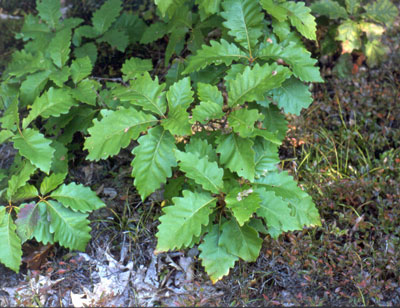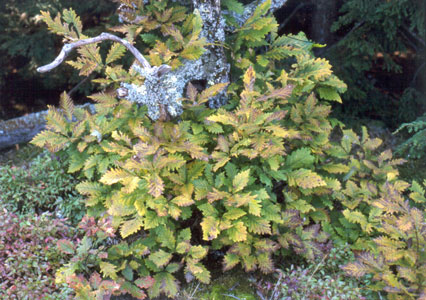DACF Home → Bureaus & Programs → Maine Natural Areas Program → Communities, Plants, and Animals → Rare Plants → Quercus montana

Quercus montana Willd.
Chestnut Oak
- State Rank: S1
- Global Rank: G5
- State Status: Threatened
Habitat: Dry acidic slopes in southern part of state. [Hardwood to mixed forest (forest, upland)]
Range: Appalachian region from Maine to northern Georgia, west to southern Illinois and northern Mississippi.
Aids to Identification: This upland tree is a member of the white oak group (oaks whose acorns mature in one summer and whose leaves do not have bristle tips, as is common in the red oak group). The bark is dark and deeply furrowed, and the leaves have 7-16 pairs of rounded teeth. Other identifying characters including sharp end buds, sparsely hairy undersides of the leaves, and an involucre (acorn cup) concealing 1/3 to 1/2 of the nut.

Ecological characteristics: This tree typically grows in mixed hardwood/conifer forest communities, often on rocky slopes, and may form a full or only partial canopy.
Phenology: Flowers May - June. Acorns ripen October - November.
Family: Fagaceae
Synonyms: Quercus prinus L. a
Known Distribution in Maine: This rare plant has been documented from a total of 3 town(s) in the following county(ies): York.
Reason(s) for rarity: At northern limit of range; not rare southward.
Conservation considerations: Parts of the chestnut oak habitat in Maine have been converted to residential use; a large part of the population occurs on land that is being conserved for natural values.